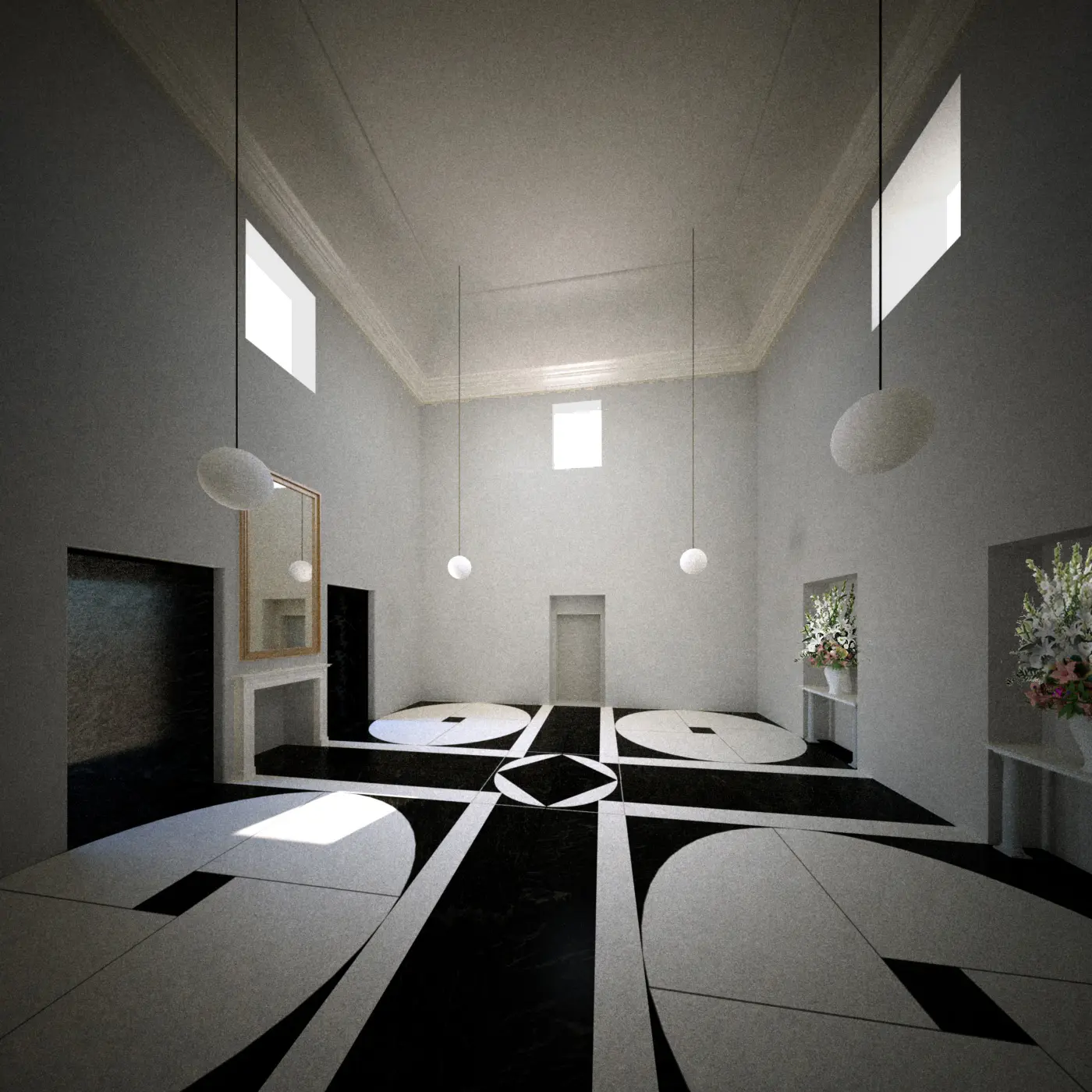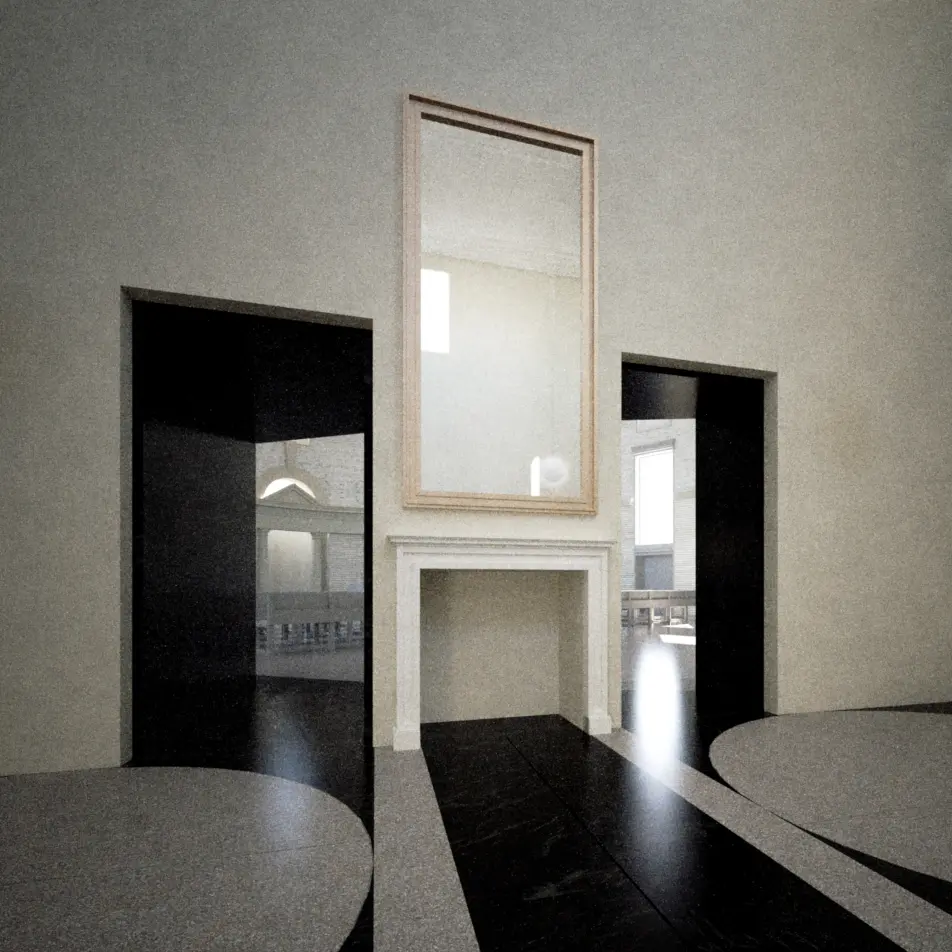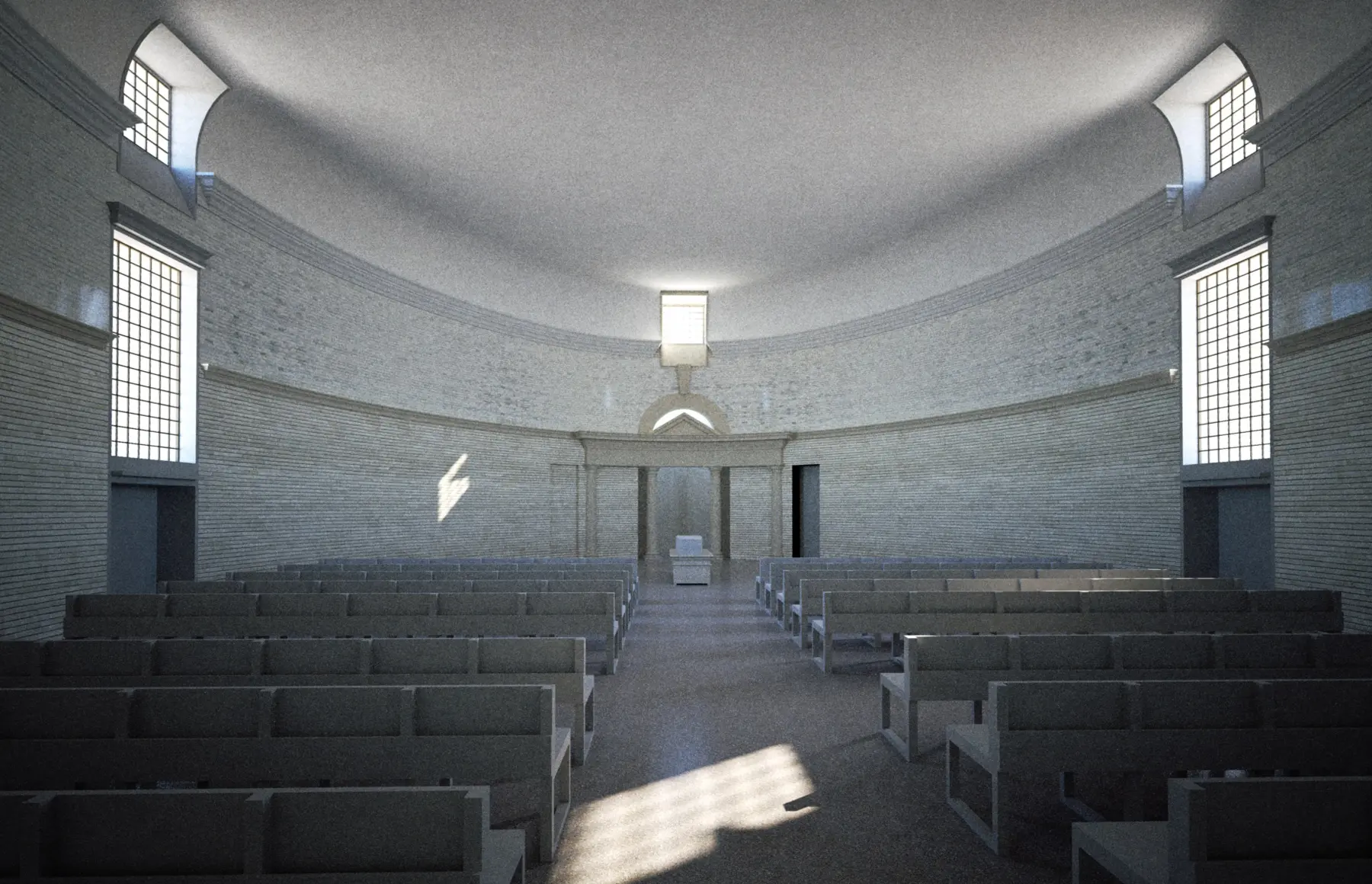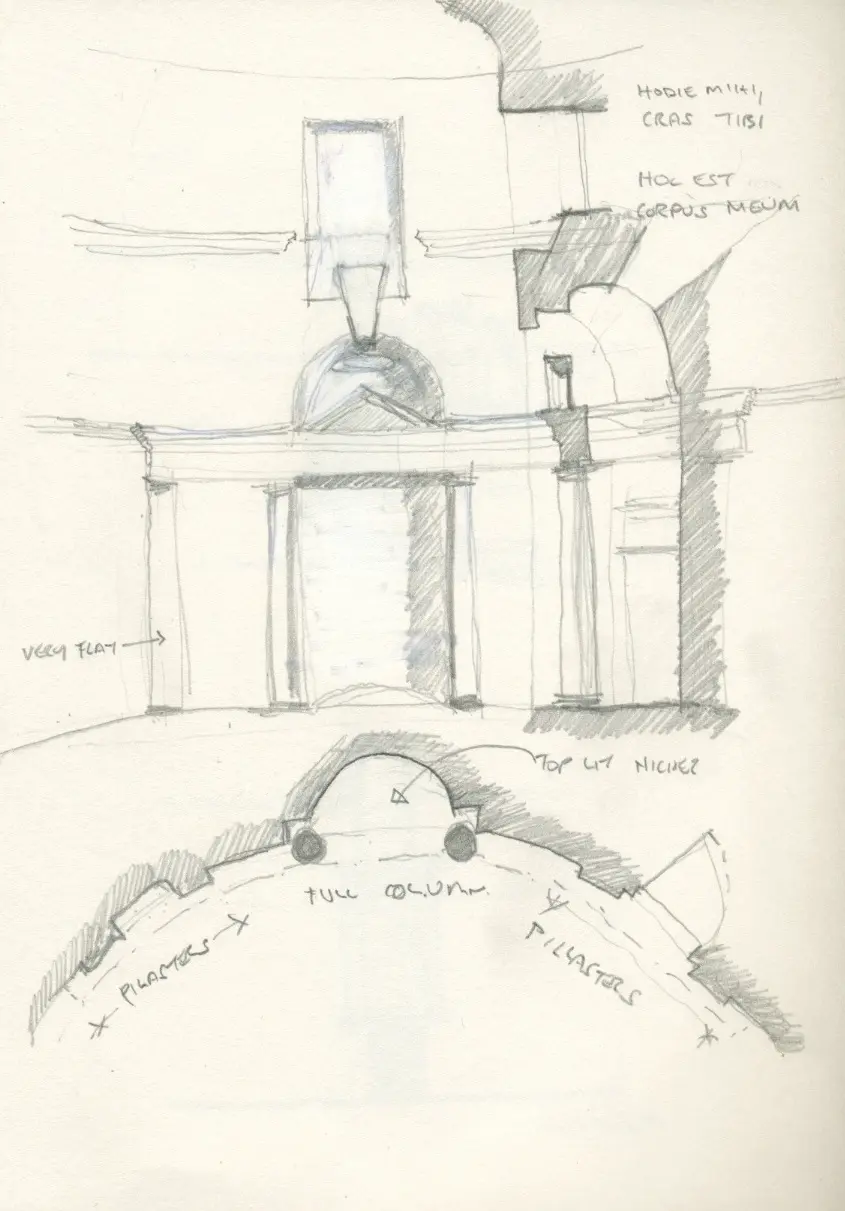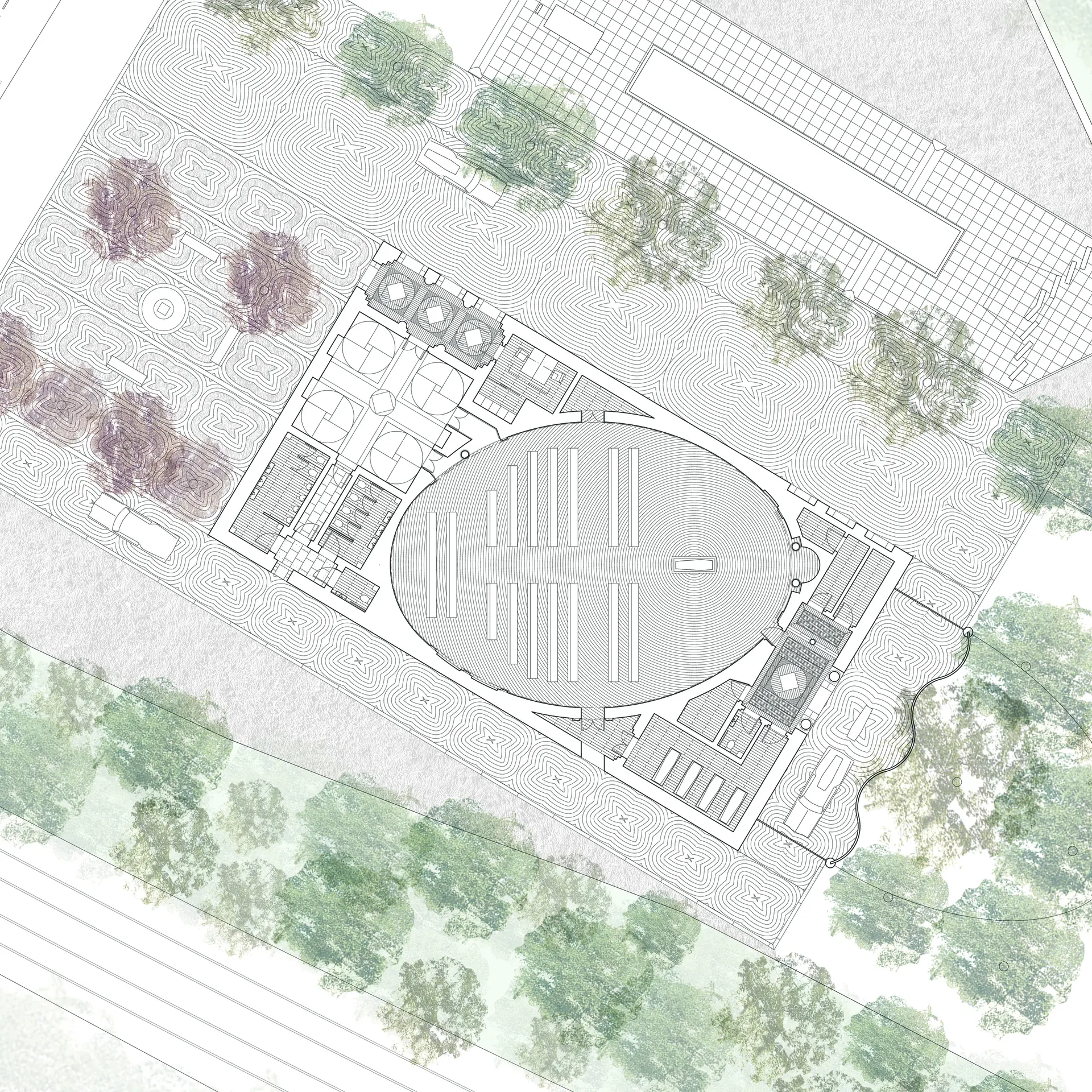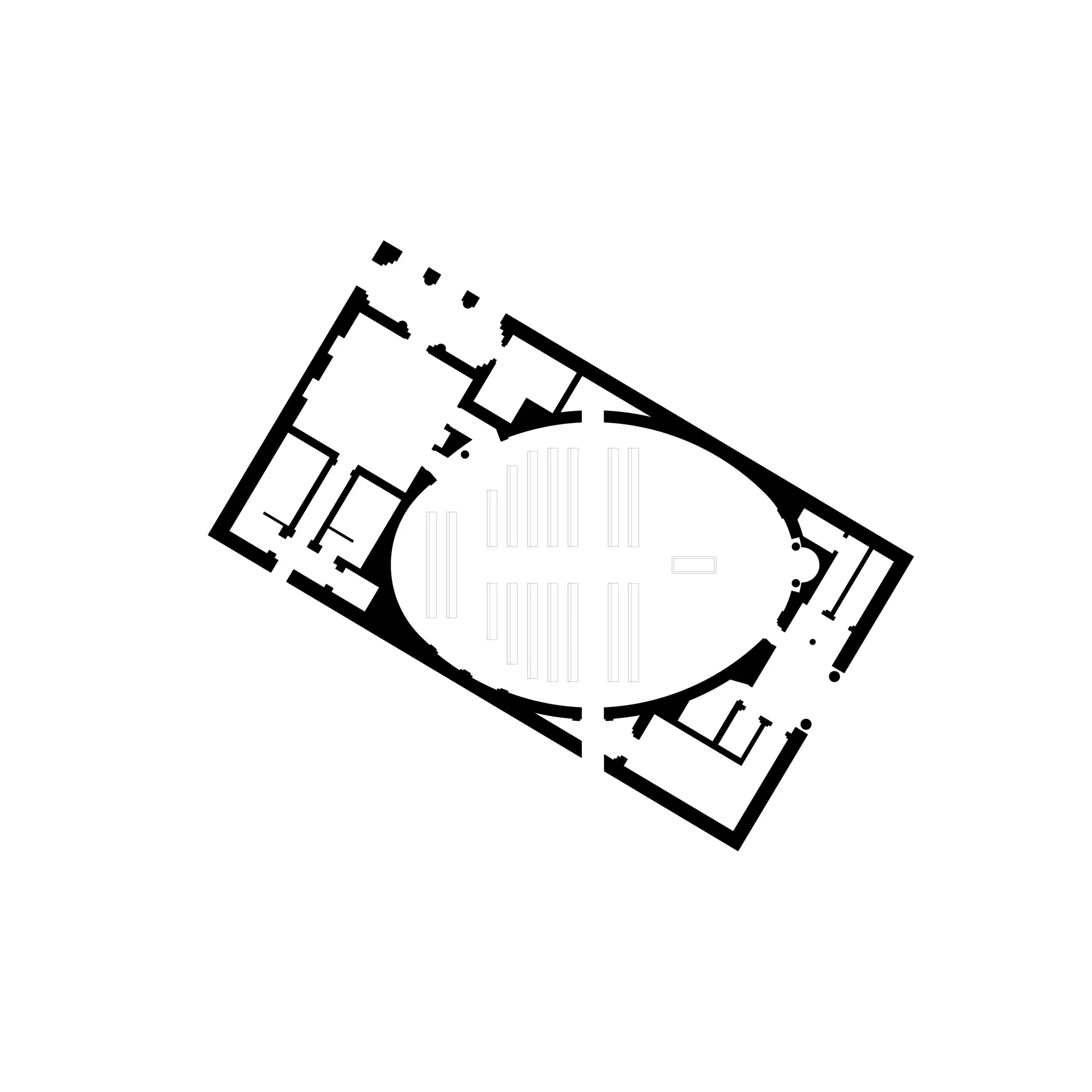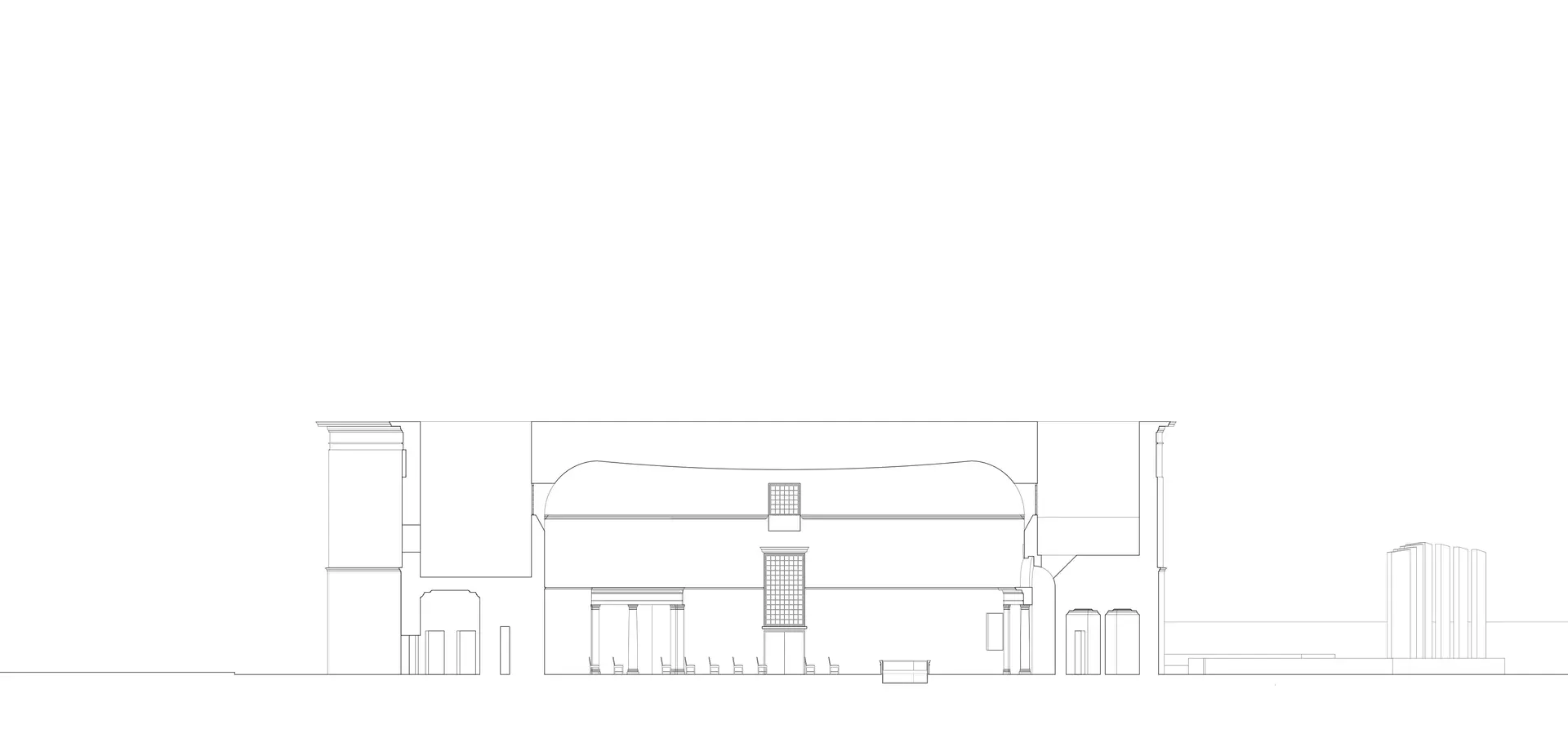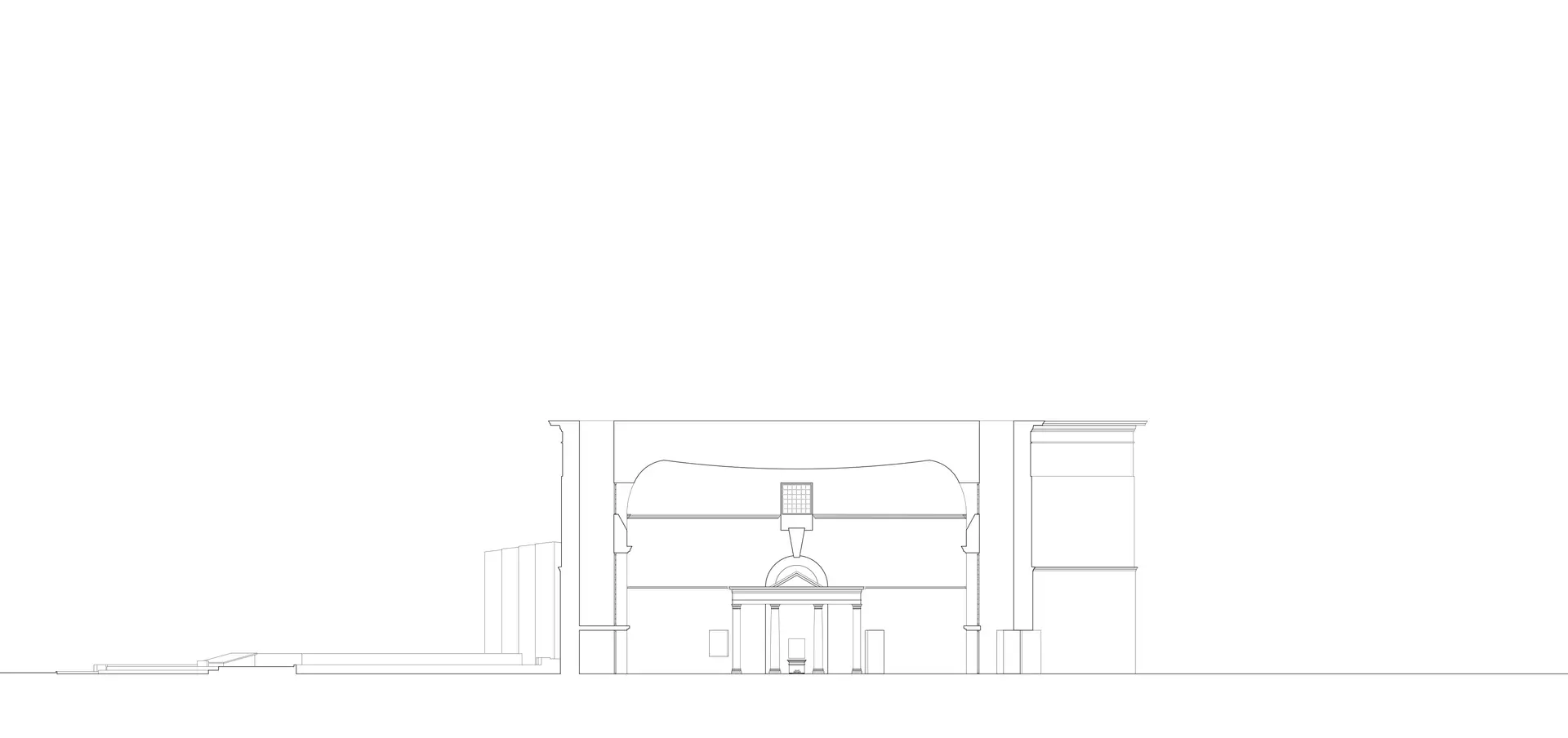Glasnevin Chapel
Competition entry for a funerary chapel, Dublin, 2013
A simple and robust brick form provides a suitably dignified backdrop to arriving mourners and provides a strong enough setting to balance the 1916 monument across the new plaza. The loggia on the north-west corner clearly denotes the entrance to the chapel. The exterior presence of the building is inspired by Arthur Shoosmith’s 1931 Garrison Church in New Delhi and is monumental, impassive and subdued, in brick and stone. This is in contrast to the interior, which is light-filled, uplifting and spatially and materially rich.
The entrance hall opens off the loggia, and is a generous perfect cube; at once decorous and domestic, intended to accommodate a full group of mourners before their entry to the chapel. The atmosphere is formal, but welcoming, much like the entrance hall of a stately home. In winter a fire burns in the fireplace between the two black stone doorways into the chapel, and two niches with console tables are provided for floral displays and photographs of the deceased.
The chapel is a high, calm, oval space, aligned to the cardinal points. The catafalque is placed close to the east end of the oval, in front of a screen and niche with daylight filtering in from above, which serves to focus the space towards the east. After the service, the mourners exit through the door under the great south window.
